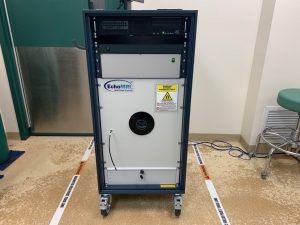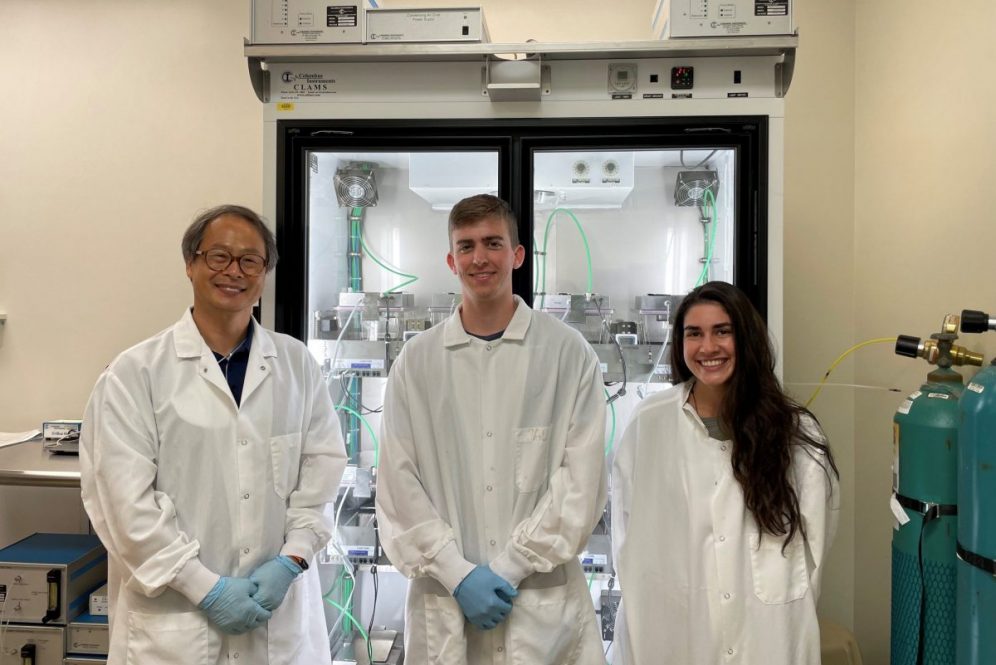The Metabolic Phenotyping Facility combines state-of-the-art technology with the expertise of faculty in the UConn Department of Nutritional Sciences to provide researchers across the University with valuable information about the metabolic implications of their work.
The facility was officially established in 2020 and has already been helping researchers advance their work, make better-informed conclusions, and strengthen grant applications.
Ji-Young Lee, professor and head of the Department of Nutritional Science in the College of Agriculture, Health and Natural Resources, received a grant in 2013 to purchase a Seahorse XF analyzer for her work on obesity. This equipment is capable of performing highly precise assessments of metabolic activity of cells.
Later, she received funding to purchase the comprehensive lab animal monitoring system (CLAMS) that provides larger-scale, non-invasive, real-time measures of oxygen consumption, carbon dioxide production, energy expenditure, physical activity, and food intake in mice.
Lee recognized the utility of this equipment extends beyond her laboratory and could benefit researchers across the University, inspiring her to establish the Metabolic Phenotyping Facility.
“I really want people in Storrs to know the facility is here and the capabilities we have to offer that they can utilize to improve the quality of their research,” Lee says.

In addition to performing metabolic analysis, the facility offers three other services: The Echo-MRI100 analyzes body composition for mice, measuring whole body fat, body fat, free water, and total water masses; the Luminex MAGPIX measures cytokines, chemokines, and hormones in plasma or serum samples; and the Cobas clinical chemistry analyzer measures common clinical chemistry in human and animal blood samples.
While there are other facilities that offer these services throughout the country, using facilities in other institutions poses challenges for researchers. Shipping animals off-campus is costly both in terms of dollars and time, making off-site facilities impractical or cost prohibitive. Shipping animals off-campus poses other logistical and resource challenges, which further adds to the value provided by having the Metabolic Phenotyping Facility on campus.
The facility is also a boon for UConn researchers’ grant applications, as they can demonstrate they have the capacity to perform detailed metabolic analysis affordably and quickly.
Daniel Mulkey, professor of physiology and neurobiology, routinely uses the facility to support his work studying how the brain controls breathing, a process intimately connected to metabolism.
“The Metabolic Phenotyping Facility has become an important component of our work,” Mulkey says. “These efforts are made easier because Dr. Lee’s team provides the data in a very easy to work with format.”
Mulkey’s lab uses transgenic and other mouse models of disease. As part of their approach, they manipulate or delete genes thought to be important to the function of cells that regulate respiratory activity. An essential part of this work is to determine whether the respiratory behavior exhibited by the animal model is a true respiratory phenotype or a secondary consequence of altered metabolism.
“The Metabolic Phenotyping Facility give us a good picture of if the mice are phenotypically normal compared to the control group or if there were different because of our manipulation,” says Colin Cleary, a recent UConn doctoral graduate who is now a postdoctoral fellow in Mulkey’s lab.
Given that metabolic activity is linked to virtually all aspects of behavior, understanding and controlling for metabolic activity will soon be essential for publishing research in high-impact journals for many fields.
“So many things can impact metabolism, it’s broadly useful to the whole UConn community” Mulkey says.
The facility offers researchers much more than access to equipment. The faculty members at the facility, including Lee, and other faculty from the Department of Nutritional Sciences, Young-Ki Park, Chris Blesso, and Maria-Luz Fernandez, offer researchers from other departments their expertise, making it a truly collaborative experience.
José Manautou, professor of toxicology and head of the Department of Pharmaceutical Sciences, turned to the facility to support his research studying a line of mutant mice that unexpectedly developed fatty liver disease.
Manautou was studying the liver’s ability to build tolerance to toxic substances. The protein Manautou’s lab was studying is a drug transport protein that had never previously shown to have any connection with the regulation of metabolic nutrients such as lipids. Yet the mice appeared to develop a metabolic liver disorder consistent with metabolic syndrome.
The facility allowed Manautou to definitively determine that the mice were experiencing metabolic syndrome, a condition associated with obesity and diabetes and which is a global epidemic.
“It adds more innovation to what we do,” Manautou says. “The in-house availability of these resources makes our lives a lot easier.”
Lee has studied fatty liver diseases extensively and extended her knowledge to Manatou’s research queries. She is a co-author on the two newest research articles on this work with Manautou and his team.
“Our goal is to help from the beginning to the end,” says Park who manages the facility. “Having that expert in-house, in Storrs, can be a great addition to many biomedical researchers.”
Follow UConn CAHNR on social media.



